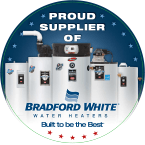Guide to SEER, AFUE & HSPF for Beaver Valley Homeowners
So you’ve made the decision to invest in a new heating or cooling system. Congratulations – enhanced comfort will soon be yours! You thought that deciding to purchase a new system was the hard part, but now you’re trying to choose the actual system and you’re overwhelmed by all the acronyms and numbers. Just what do SEER, AFUE, and HSPF stand for? And how should they factor into your decision on a new HVAC system?
Questions about HVAC efficiency ratings? Reach out to the friendly professionals at BVSM Heating & Air Conditioning. Contact us online or give us a call at 724-417-9550.
The ABC’s of SEER, AFUE & HSPF
SEER, AFUE, and HSPF are all measures of energy efficiency, but they’re each used for different types of systems. Understanding them is key to making the right choice, so read our breakdown of each rating below.
SEER: Air Conditioner Efficiency
SEER stands for Seasonal Energy Efficiency Rating, and it is used to rate the efficiency of cooling systems. The efficiency of central air conditioners, ductless mini-splits, and heat pumps in cooling mode are all measured with SEER.
How is SEER calculated?
SEER is calculated by dividing the cooling output for a typical cooling season by the total electric energy input during the same time frame. It’s important to note that a SEER rating is a maximum efficiency rating, which means that it’s the most efficient that it is possible for your system to operate. Your cooling system may operate less efficiently due to factors such as excessive heat, poor maintenance, airflow, or malfunction.
What does a high SEER rating do for you?
Air conditioners may look similar, but their SEER rating can vary widely. Higher SEER numbers save more money on electricity. A 13 SEER air conditioner, the EPA “current minimum standard,” uses 23% less energy than a 10 SEER unit (EPA standard up until Jan. 2006). Even though 13 SEER is the minimum efficiency available, we currently offer a line of air conditioners that start at 13 SEER and go all the way up to a 21 SEER. Depending on your usage, higher SEER air conditioners can significantly reduce your electric bill.
SEER Summary:
- Used for – Cooling systems, including central air conditioners, ductless mini-splits, and heat pumps in cooling mode.
- Minimum SEER rating permitted by the EPA – 13
- Maximum SEER rating available today – 25
AFUE: Efficiency of Furnaces, Water Heaters & Boilers
AFUE stands for Annual Fuel Utilization Efficiency, and it is used to rate the efficiency of some heating systems. Furnaces, water heaters, and boilers are all rated for efficiency with AFUE.
How is AFUE calculated?
AFUE is much easier to understand than SEER because it is simply a percentage of heat output divided by heat input. It measures how much of a heating system’s fuel gets turned into actual heat, and how much is lost in the process. For example, a gas furnace with an AFUE of 80% turns 80% of the gas it consumes into heat for your home, while the other 20% is lost.
What does a high AFUE rating do for you?
Today’s new high-efficiency furnaces can save up to 50% in operating costs over a ten-year-old furnace. Many 1990 and earlier model furnaces have AFUE ratings of 65% or less. The EPA raised the standards for AFUE on May 1, 2013, so furnaces manufactured after that date are typically much more efficient than those made earlier. Our current product offering starts at 65% and goes all the way to a very efficient 98.3% AFUE rating. Depending on your average usage, higher AFUE rated furnaces can significantly reduce your gas bill.
AFUE Summary:
- Used for – Heating systems, including furnaces, water heaters, and boilers.
- Minimum AFUE rating permitted by the EPA – 80% in southern states and 90% in northern states.
- Maximum AFUE rating available today – 98.7%
HSPF: Efficiency of Heat Pumps in Heating Mode
HSPF stands for Heating Seasonal Performance Factor, and it used solely to rate the efficiency of heat pumps in heating mode.
How is HSPF calculated?
HSPF is calculated by dividing the total heat output during a heating season by the total electricity consumed. Basically, it tells you how much heat you get (in BTUs) per kilowatt-hour of electricity. For example, a heat pump rated 10 HSPF will produce 10 BTU’s of heat for every kilowatt-hour of electricity. Just like with SEER and AFUE, the higher the number, the more efficient the unit. The HSPF scale range is 7.5 to 13.0.
What does a high HSPF rating do for you?
Higher HSPF ratings mean greater energy savings. A high HSPF heat pump will use less energy to produce the same amount of heat as a lower HSPF heat pump, saving you money on your utility bills.
HSPF Summary:
- Used for – Heat pumps in heating mode
- Minimum HSPF rating permitted by the EPA – 8.2
- Maximum HSPF rating available today – 13.0
BVSM: Your Provider of High-Efficiency Heating & Cooling Systems
At BVSM Heating & Air Conditioning, our focus is on finding energy efficient solutions to maximize your comfort while minimizing your energy bills. With over 60 years of HVAC industry experience, we provide home and business owners throughout Monaca, Beaver Valley, and the surrounding areas with premier heating and cooling systems. We are continuously researching new products to provide the latest technology for comfort and efficiency to our customers. If you have questions about efficiency ratings while choosing a new heating or cooling system, our friendly team will work with you to help you find the best unit for your needs.
Ready to save on utility costs with high efficiency heating and cooling systems? Contact BVSM Heating & Air Conditioning today to learn more or call 724-417-9550!






